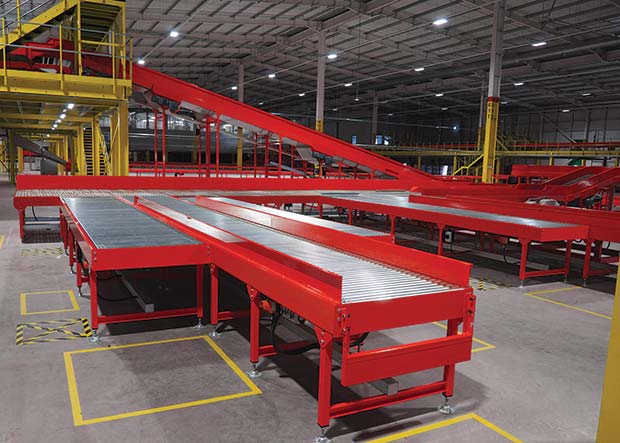Automating manual routines and repetitive tasks makes it easier to handle higher volumes, whilst making the shipping process both flexible and more cost-effective.
 The race to provide a fully cohesive digital shopping experience has intensified, as Covid-19 spurs consumers to shop online. Unprecedented growth in e-commerce has left retailers and their logistics partners overwhelmed by the sheer volume of packages to be packed, labelled and shipped.
The race to provide a fully cohesive digital shopping experience has intensified, as Covid-19 spurs consumers to shop online. Unprecedented growth in e-commerce has left retailers and their logistics partners overwhelmed by the sheer volume of packages to be packed, labelled and shipped.
In a bid to keep up, plans to optimize and automate are being accelerated. Retailers, despatching online orders directly from the warehouse or fulfilment centre, are on the lookout for automation that can streamline this process. Parcel carriers are automating the routing process typically handled manually in depots today.
Adopting the right technology is key to successfully shaping your shipping process for the future.
Wrapped and labelled, including relevant paperwork
Handling documents manually is not only extremely time-consuming — there is an inherent risk of mistakes occurring, particularly when employees are under pressure and customers change orders at the last minute. With automatic document handling, relevant paperwork is printed immediately before packaging, so order changes and out of stock items are accurately documented. The paperwork is matched to the consignment and inserted automatically. Shipments can also be bagged as part of the automated process.
The automated labelling system cross-checks order data with the parcel’s unique barcode and carrier-specific labels are firmly affixed at specific X, Y, Z coordinates — over an existing label for clarity, or in a vacant spot. For B2B and overseas shipments, where customs papers must be readily to hand, the shipping label can be formed as a document pouch and the paperwork automatically inserted. This allows documents to be accessed without opening the package.
Loaded and away without delay
When trailers are loaded automatically, completion time can be accurately predicted. The flow from warehouse to hub, and from hub to depot, can be managed more efficiently.
Automatic loading can run 24/7, which increases throughput substantially. The cost of handling, training, recruiting and sickness is cut, as the only human involvement required is a single supervisor, who can monitor several doors. The short return on investment speaks for itself.
Automate the routing process
Automating routing at depot level is often a cost-effective solution for parcel carriers and 3PL companies. When routing becomes more streamlined, capacity can increase without eating into profit.
For retailers, it’s often a question of using the warehouse as a fulfilment centre or extending automation to the door, so online orders can be handled automatically and shipped directly to consumers. In some areas an automated micro-fulfilment centre closer to the end-customer could be the answer to handling higher throughput economically.
Understanding the need is central
To implement a growth strategy successfully, it is essential that specialists brought in understand the goals, how changes can potentially affect other processes and possible pitfalls. In short the team must be 100% committed and absolutely sure that the project being implemented will be positive for your business.
For more than half a century, Caljan has helped parcel carriers, retailers and manufacturers around the world handle loose-loaded cargo efficiently. Almost every parcel and package despatched today has travelled along a Caljan Telescopic Conveyor at some point in the handling process. Our Individual Labelling Solutions, Automatic Document Handling and Depot Automation Solutions make sure the right items are in the right place — at the right time.
For details, go to www.caljan.com or contact Paul Byers on 01908 648900.




Comments are closed.